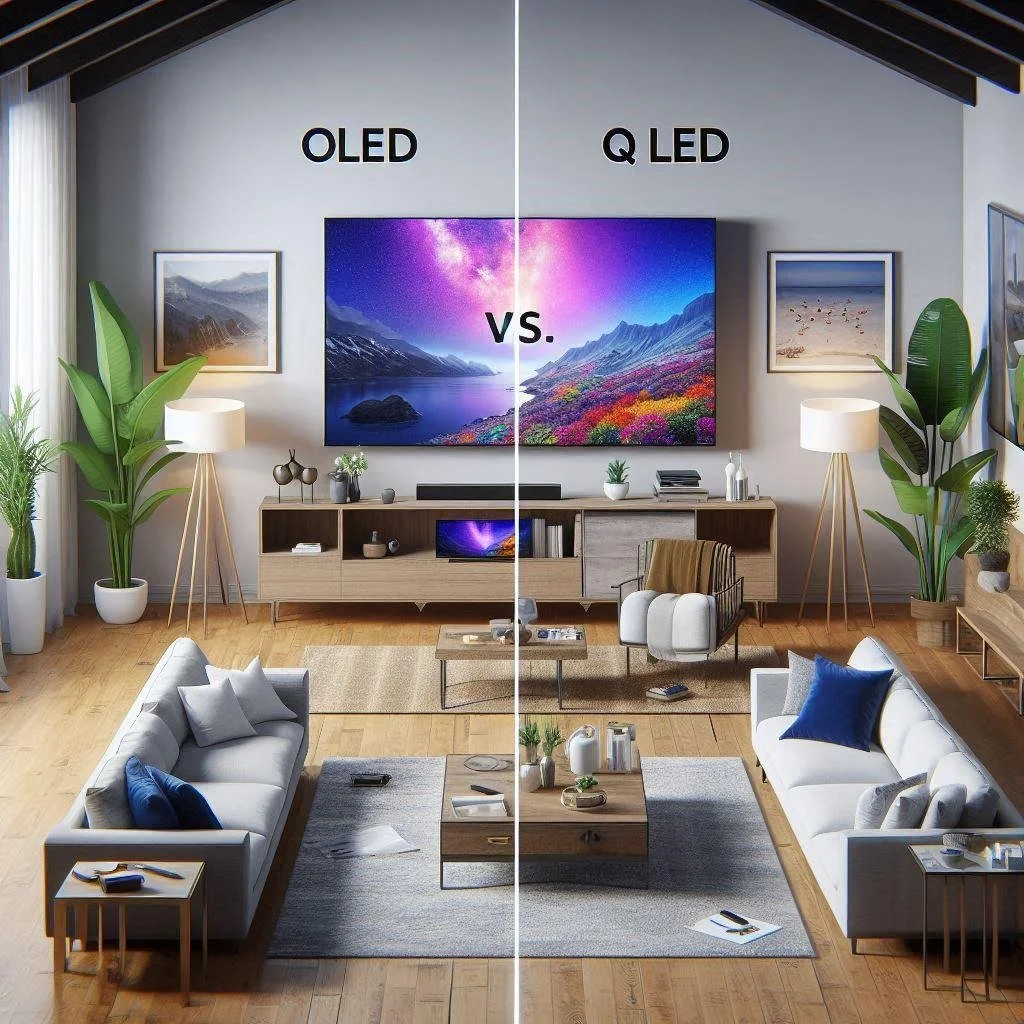Explanation Needed: What is The difference between OLED and QLED TVs
Do you know the difference between OLED and QLED when shopping for a TV? The variety of acronyms like 4K, 8K, UHD, and HDR can overwhelm those who aren't tech-savvy. It's important to understand these technologies as they impact the viewing experience. Major manufacturers like Sony, LG, and Samsung utilize these visual technologies in their products. Clarifying these terms can help make an informed decision when selecting a TV.
However, the two most significant terminologies you'll always encounter on high-end TVs are OLED and QLED. In this post, we'll delve into these vastly diverse technologies.
This is a 77-inch LG A2 OLED TV
The OLED TV
OLED TVs differ fundamentally from LED-LCD TVs. The term OLED stands for organic light-emitting diode. Each pixel in an OLED TV emits its light, making the LCD unnecessary for image display. A single OLED pixel consists of 'micro pixels' corresponding to the red-green-blue color matrix. This technology allows for enhanced color and contrast in the images displayed.
OLED TVs have remarkable advantages compared to traditional display technologies. One key feature is their ability to produce true blacks by allowing pixels to turn off completely, leading to high contrast ratios and vibrant colors. This capability enhances energy efficiency, as darker scenes consume less power. Additionally, OLED TVs provide wider viewing angles, maintaining consistent picture quality from various positions. Their thinner and lighter panels contribute to a sleek design that enhances the aesthetic appeal of any living space.
This is a 65-inch Samsung QLED 4K Q 80 TV
The QLED TV
QLED TVs represent a more advanced form of LCD-LED technology. In these TVs, the LEDs, or light-emitting diodes, serve as a backlight that transmits images through the LCD. One significant issue with LED LCD TVs is the variability in how the LCD screen renders the backlight color as an image. This inconsistency can lead to differences in image quality across different sets. Understanding these aspects helps in recognizing the strengths and weaknesses of QLED technology.
QLED technology addresses specific display issues by incorporating a quantum-dot filter between the LED backlight and the LCD screen. This quantum-dot filter enhances the quality of light emitted from the LEDs, resulting in vibrant and saturated colors. Essentially, QLED displays can be described as an LCD-LED sandwich, with the quantum-dot layer playing a crucial role in improving image brightness. The addition of this filter significantly elevates the visual experience for viewers. This technology combines elements to enhance color purity and illumination.
The most significant advantage of QLED TVs is their superior brightness, primarily due to the quantum dot filter. These TVs are ideal for spaces with high ambient lighting, such as living rooms with numerous windows. In addition to their performance, QLED TVs are generally more affordable than other options. Overall, these features make QLED TVs a compelling choice for some consumers.
Epilogue
OLED and QLED technologies each present unique strengths in the television market. OLED TVs provide superior black levels, contrast, and viewing angles since each pixel emits light, resulting in deeper blacks and vibrant colors. Conversely, QLED TVs, essentially enhanced LED LCDs, excel in brightness and affordability. The quantum dot layer in QLEDs boosts brightness, making them suitable for well-lit rooms. However, since QLEDs depend significantly on backlighting, their black levels and contrast are diminished compared to OLEDs.
Choosing between OLED and QLED depends on what you prioritize the most. OLED TVs are a must-have if you value picture quality and viewing angles. For high brightness and a budget-friendly option, QLED is the ideal fit. As a consumer, you must consider viewing habits and the environment when making this decision. Ultimately, your choice will reflect preferences regarding display performance and cost.









